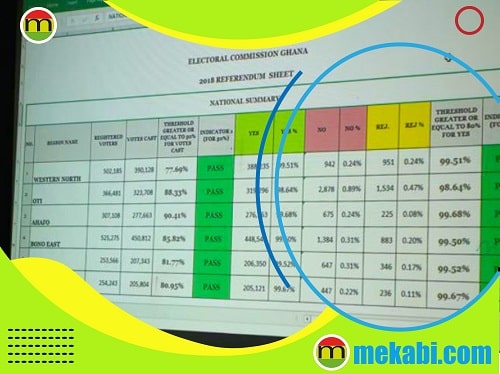The Six Newly Created Regions In Ghana
The administrative regions of Ghana have changed considerably throughout the years. In accordance with his campaign promises, President Nana Akuffo Addo increased the number of regions in Ghana from ten to sixteen.
The article will go over the new regions’ names, capitals, and other details.
The Six Newly Created Regions In Ghana
The many applications that had been pending since 1954 have now been granted, with the addition of six more regions to the original 10.
The current president, His Excellency Nana Addo Dankwa Akuffo Addo, was in office when this occurred on February 12, 2019.
During his 2019 campaign for the NPP, which he led alongside Nana Addo Dankwa, the current president of Ghana made a campaign promise that in order to ensure better governance and a more equitable distribution of the country’s wealth, certain regions would have to be created by carving out others.
Therefore, a referendum was necessary for Ghana to decide whether or not to approve of this policy. Happily, 90% or more of the people voted in favor of the designated locations.
Ghana is administered through its regions, which serve as administrative divisions.
The Regional Minister is the head of each region. The country’s president appoints the Regional Minister.
The regions are further subdivided into districts, with District Chief Executives serving as their respective heads, for the purpose of improved governance.
The goal of all this work is to strengthen the system of government in Ghana so that the common citizen can live better.
It might be helpful to review the 10 regions that now exist in Ghana before jumping to the newly formed areas.
The Ten Already Existing Regions In Ghana
The ten historic regions were formed during the colonial era, using the administrative systems that were already in place at the time.
These are the ten current regions, along with the capital cities of each.
The previous 10Regions And Their Capitals
- Greater Accra Region – Accra
- Ashanti Region – Kumasi
- Western Region – Takoradi
- Eastern Region – Koforidua
- Central Region – Cape Coast
- Brong-Ahafo Region – Sunyani
- Northern Region – Tamale
- Upper East Region – Bolgatanga
- Upper West Region – Wa
- Volta Region – Ho
The Creation Of The New Region
On February 12, 2019, President Nana Addo Dankwa Akuffo Addo of Ghana officially established six new regions around the country.
This is why, per the suggestions, a commission was set up to investigate the rationale for the creation of the areas.
The suggested regions’ feasibility and potential were to be evaluated by this committee.
What Is The Purpose Of The New Region?
In order to expedite development in the impacted areas and bring governance closer to the people, new regions have been established.
Some consider the establishment of the six new regions as a way to guarantee and encourage equitable distribution of national resources and opportunities.
The Six New Regions
1. The Ahafo Region
Separated from the Brong Ahafo Region is the Ahafo region. Goaso is its capital. Agricultural products from the Ahafo region, like as cocoa, yams, and plantains, are famous worldwide.
2. The Bono East Region
Also separated from Brong Ahafo was the Bono Region. Its capital is Techiman. Timber and agricultural products have made the Bono East area famous.
3. The North East Region
After the Northern Region was divided, the North East Region was formed. Its capital is Nalerigu. Cattle, crops, and ecotourism are the North East’s claim to fame.
4. The Savannah Region
The Northern region was divided into the Savannah region. Its capital is Damongo. The Savannah area is famous for its rich history and exotic animals, including baboons, elephants, and many more.
5. The Oti Region
Separation from the Volta region became the Oti region. Its capital is DaAmbai. Many agricultural products, including cassava, yams, and others, come from the Oti region.
6. The Western North Region
Separated from the original Western Region is the Western North Region. This entity’s capital is Sefwi Wiawso. Popular commodities from the area include lumber, cocoa, and gold.
Conclusion
To facilitate substantial development in the impacted areas, the new region was established during the presidency of Nana Addo Dankwa.
Additionally, it is intended to help close the gap between citizens and their government in terms of governance. The feasibility and potential of the newly formed region were to be evaluated by a commission that was formed to investigate its creation.
In 2019, six new regions were established. Just knowing the names and general locations of the regions might help a beginner get a better grasp of Ghana’s administrative systems and historical growth.
The article went over everything from the six newly formed regions in Ghana to their capitals, the reasons behind their construction, the importance of each region, and more.








